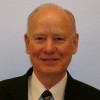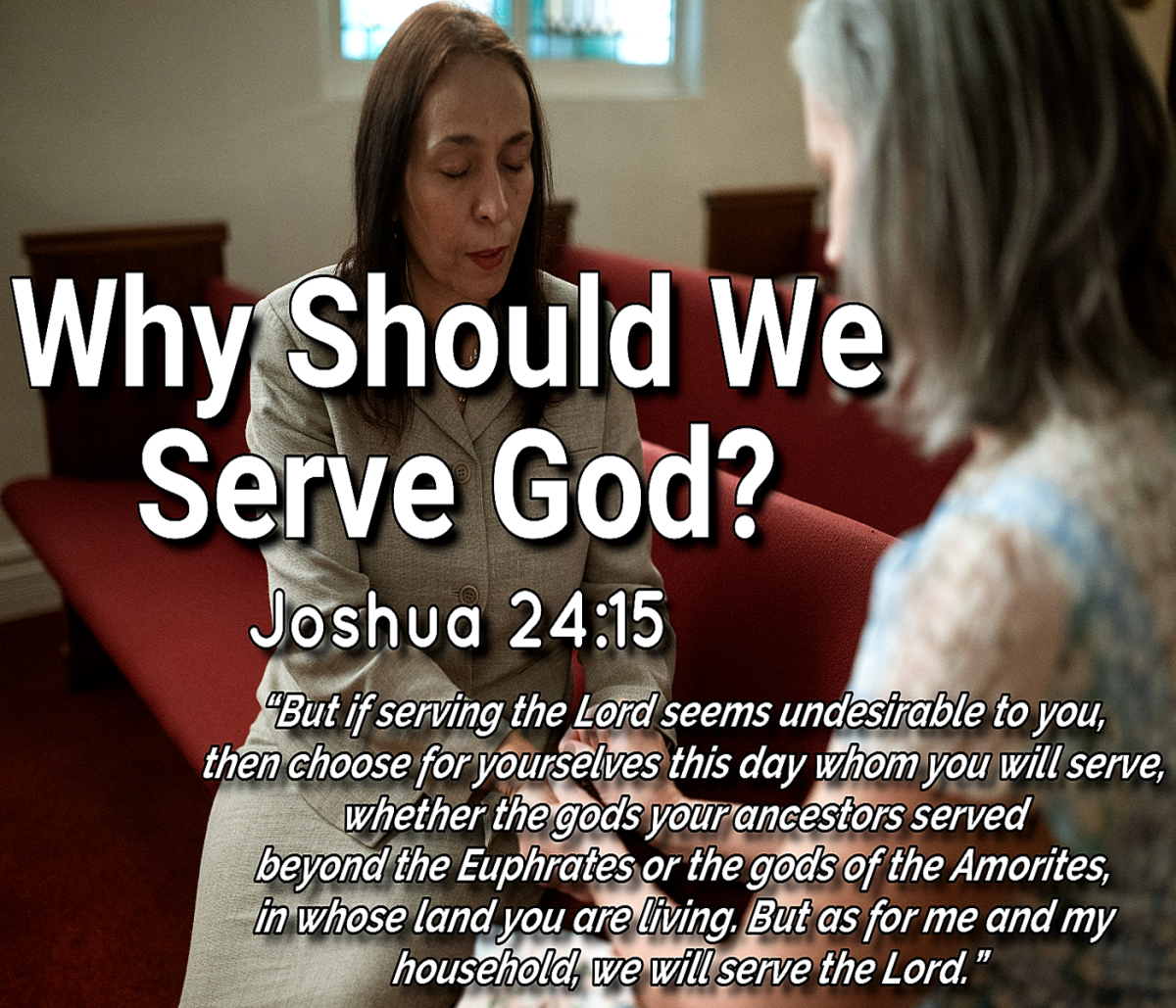Responding Effectively to the Sermon on the Mount, Matthew Chapters 5, 6, and 7
Week 10 in "Healing and Good Health in the Sermon on he Mount," August 30, 2015
Section 1. Two Ways of Reacting to the Sermon on the Mount
This summer we have considered the Sermon on the Mount (SM) as the teaching of Jesus for people who came to him for healing and treating “every disease and every infirmity among the people” (Mt. 4:23, RSV). This, of course, is only one of many legitimate ways to study the Sermon on the Mount (Warren S. Kissinger ably outlines the variety of views in The Sermon on the Mount: A History of Interpretation and Bibliography [Scarecrow Press and American Theological Library Assn., 1975].)
Anyone reading the Sermon on the Mount today can react to it in one of two opposite ways:
(a) You can say, on the one hand, “I do consider it relevant to me because I’m hurting, or I’m hungry, or I’m poor, or I’m sick, or I just want to improve my life in general, and I want to give the teachings of Jesus a chance to help me live a better life in this world here and now!”
(b) Or, on the other hand, you can say, “I do not consider the Sermon on the Mount immediately relevant to any immediate, personal concern I have,” or “I consider it too hard for me to do, so I’m going to leave it to a future heaven in the world to come after I leave this world.”
In other words, you either do see the point in letting these teachings of Jesus help you here and now, or you do not see the point.
I have directed my teaching this summer toward helping those people who do see the point, and do want to benefit personally from these teachings of Jesus.
Jesus said much the same thing in his own way when he ended these teachings with the parable of two builders, recorded by both Matthew and Luke (Mt 7:24-27; Lk 6:47-49):
Everyone hearing these words of mine and doing them will become like a practical (wise, prudent) person who built his house on the rock. And the rain came down, and the rivers came, and the winds blew and fell toward that house, and it did not fall, for it had been founded on the rock.
And everyone hearing these words from me, and not doing them, will become like a foolish man who built his house on the sand. And the rain came down, and the rivers came, and the winds blew and struck toward that house, and it fell, and its fall was great.
For fascinating, close comparison, we can still read an account of the last words Moses spoke to the Israelites on the Lord’s behalf just before his death, described in Deuteronomy 30:11-20, a famous passage undoubtedly well known to both Jesus and the gospel writer Matthew.
Section 2. How to Resolve Issues of Broken Relationship
All the problems and issues raised by Matthew's Jesus in the Sermon on the Mount fall in the general category of broken relationships (BR) between and among people, and to make it specific to each person reading or hearing, broken relationships between you and someone else.
Now all these same issues occur in any family among children relating to each other and to other children outside the home. When one of these issues arises with a child, a parent usually, and normally, just says, “Don’t do that!” As in, “Don’t hit Tommy!” Or “Stop criticizing your little sister all the time!” Or the parent takes direct action to keep these things from happening: Johnny can’t play with Tommy anymore! Or Johnny loses some privilege he used to enjoy, like going to the playground with little sister.
When BR issues arise for an adult person, the internalized parent continues to reprimand, but obviously, in most cases, with far less direct effect. It all depends on how much of a conscience the child developed on the way to becoming an adult.
Most adults, however, who continue to have issues of Broken Relationship require more specific steps that involve new learning and new understanding.
For you, as an independent adult person, in order to heal, correct, solve, or resolve any issue of Broken Relationship, you must take several specific steps that will lead you toward better understanding of yourself and the other people involved.
a. You must find, or develop within yourself the desire and the will to take some concrete steps in search of greater understanding.
Most religiously oriented people would probably consider any such human effort unlikely to succeed unless undertaken “with the help of divine grace,” or something to that effect. But whatever you might consider your sources of empowerment, it will still depend on you choosing to do the hard work involved in the search of greater understanding.
Normally speaking, to receive help in this world on any issue, you must want the help. (The SM even covers this principle in Mt 7:7-8: “Everyone continually-asking is-receiving,” etc.
b. You must then search with an open mind for the causes behind the Broken Relationship that takes into consideration the various relevant differences between you and the other person involved.
c. You must gather, that is, you must learn, relevant information about yourself and the other person that constitute the differences between the two of you. Don’t forget that you are an integral part of the situation, so you must assume your share of the responsibility for the break, and this requires you to dig deeper into yourself and learn more about yourself as well as learning more about the other person involved in the brokenness.
d. You must apply the information you gain to the specific case at hand, what we call the dynamics of the problematic situation.
In ancient times, this kind of information was not generally available to the average adult, esp. the poor and marginalized ones. Today, however, in large part due to two thousand years of Christian influence, a more advanced civilized culture has developed in Western Europe and America that provides informational resources beyond the wildest dreams of the ancient world, and teaches everyone in legally required education how to read and use those resources.
These resources, in fact, have become so abundant today that no one person can become expert in all of them. Even to become fully aware of all of them requires a lifetime of diligent attention.
But as said by the Chinese philosopher Lao-tzu (604-531 B.C.E.), “A journey of a thousand miles begins with one step” (or “begins beneath one’s feet”), so the best advice I can offer is this:
a. Go through the various items in the Sermon on the Mount and find the Broken Relationship problem or issue most troubling to you.
b. Find the differences among people most likely to be relevant to that issue or that situation
c. Learn what you can about those specific differences.
d. Then apply what you have learned to gain a better understanding of the people involved in the broken relationship problem or issue that troubled you the most.
Section 3. Some Kinds of Differences between People in a Broken Relationship
Here is a list of the kinds of differences most commonly occurring behind a Broken Relationship. In each case, as it happens, abundant materials exists in any public library, and today, on the Internet.
Every one of these differences has received extensive research, with results made available to the public through popular writing accessible to any literate adult. Here are a few wide-ranging sources to stretch your mind, but please do not think that I endorse everything any writer says on any subject.
1. Differences in sex and sexual orientation. An obviously imperative study for anyone in any kind of relationship with another person, regardless of sex, but particularly essential for anyone married or contemplating marriage, well known as the most difficult of all possible partnerships.
From the enormous literature, start with Deborah Tannen (prof. sociolinguistics, Georgetown Univ.), You Just Don’t Understand: Women and Men in Conversation (Ballantine, 1990), four years on NY Times Bestseller List. John Gray made a career from his first simple idea, Men are from Mars; Women are from Venus (Harper, 1992), controversial but still widely read.
2. Differences in birth order inside one’s family have profound implications on such things as your basic personality, leadership-followership styles, practical vs. artistic inclinations, and so on. See Kevin Leman, The New Birth Order Book: Why You Are the Way You Are, rev. ed. (Grand Rapids: Revell, 1998).
3. Differences in family background include how you were raised and treated as infant, as young child, as growing-up child, as adolescent, and so on. Much of the literature stems from Freudian and related psychoanalytic insights. See Erik H. Erikson, Childhood and Society, 2nd ed. (Norton, 1963), Identity: Youth and Crisis (Norton, 1968), and Identity and the Life Cycle (1959; Norton, 1980).
4. Differences in your two parents and in your four grandparents. Where were they born? Where and how did they meet? What were they like? What did they do with their lives? How did they relate to each other, to you, and to the rest of your family? And so on. No one can fully understand themselves without coming to terms with their own parents and grandparents -- the good, the bad, and the ugly! Deal with it!
5. Differences in location of birth and formative years, and where you worked. In 1933, my birth town of well-established Omaha, Nebraska was not the same as Tulsa, Oklahoma, the rich new oil-boom town where I was raised. And to name a few other places I have lived or worked, Tulsa differs radically from Waco, Texas (where I got two degrees from Baylor), or Louisville, Kentucky (where during the 50s I went to the Seminary and worked nights at General Electric), or Manhattan in New York (where at various times I worked for Remington Rand Univac and the United Nations Secretariat), or Harvard Square in Massachusetts where during the 70s I worked for Harvard University and operated Overnight Typing Service). Nor is living in the Chicago suburbs like living in Hollywood, or Austin, Texas, or Royalton, Vermont!
6. Differences in age. Goals, desires, and interests change dramatically with age. For men, see Daniel J. Levinson, The Seasons of a Man’s Life (NY: Knopf, 1978); and for women, see Gail Sheehy, New Passages: Mapping Your Life across Time (NY: Random House, 1995).
7. Differences in generational cohort. Which cohort were you born into? People born in the fifties see the world differently from people born during the depression, as well as from the so-called millennials born at the dawn of the 21st century. (See print-out from Pew Research Center, 2015).
8. Differences in level of education, what kind of education, quality, specialty, etc. Graduates of a local community college, for example, will usually behave far differently than a graduate of an Ivy League university like Harvard, and have a far different perspective on almost any issue.
9. Differences in religion. Even Christian denominations may observe very different religious practices, hold different doctrines and belief systems, have different ways to teach children, and so on. For starters, see the website www.religioustolerance.org. For specific instances of difference, just google the Internet with the names of the two groups.
10. Differences in culture. See Analytic Technologies, “Differences in Culture,” on the Internet.
For deeper study, Katheryn Tanner (Univ. of Chicago Divinity School), Theories of Culture: A New Agenda for Theology (Minneapolis: Augsburg Fortress, 1997), esp. “Christian Identity as Essentially Relational,” pp. 110-119. On the unavoidable influence of cultural differences, see Lois Tyson, Critical Theory Today: A User-Friendly Guide (NY: Garland, 1999), which shows how critics working from ten different cultures present radically different interpretations of F. Scott Fitzgerald’s novel The Great Gatsby (1925).
11. Differences in personality type. To what extent do you lean toward introvert or extrovert? Toward thinking or feeling? Toward sensing things or intuiting them? Best known as measured into 16 major personality types by the Myers-Briggs test, and popularized in books by David Kiersey (1921-2013) and Marilyn Bates, Please Understand Me (1978), and expanded in Kiersey, Please Understand Me II (1998).
12. Differences in work. Lawyers see a far different world than do medical doctors, not to speak of manual laborers and grocery store clerks! Full-timers differ from part-timers, and both differ greatly from the chronically unemployed or under-employed.
13. Differences on social, political, or public policy issues. Nothing illustrates how this kind of private phenomena can lead straight into public tragedy better than the Ken Burns series on the American Civil War, originally broadcast in September 1990, and now set for re-broadcast September 7-11, 2015 as restored in high definition.
For people who have already made their minds up about a given issue, I refer to the famous remark of Friedrich Nietzsche (1844-1900) that people seeking understanding need more than “the courage of their convictions”; they need the courage for an attack, for a critique, of their convictions.
Valuable resources exist today for understanding the many sides of complex public policy issues. See esp. the excellent series for high schools published by Greenhaven Press (now with Thomson/ Gale): the Opposing Viewpoints Series, the Current Controversies Series, and the At Issue Series. More on a college level is the Taking Sides series published by McGraw-Hill/Dushkin.
14. Differences in natal horoscope, that is, the specific position of the sun, moon, and planets of the Solar System at the time a person was born.
Most Christian belief statements deem astrology sinful, but that stems largely from the common, but obviously false practice of giving astrology an unrealistic and unnecessary priority over God and well established principles of theology and ethics. In that sense, anything – any method of understanding – can become theologically sinful if you elevate it above your faithful obligations to the ultimate Creator God revered in Christian faith, and indeed, in most other religious faiths as well.
Meanwhile, a whole industry of contemporary analysts has built on astrology’s 5,000-year history to create yet another resource for analyzing and understanding one’s self and the differences between one’s self and other people. Laurence Cassidy, “The Believing Christian as a Dedicated Astrologer” (1994), discusses all aspects of this complex mixing of genres (available on the Internet).
Note on finding resources. It is fairly easy today to find a book on these topics or any others. Even if you have no recent library experience, you can simply take this list with you to your nearest public library, go to the Adult Reference Department, and ask the librarian on duty to help you find a good introductory book on the particular area you have marked. They do this kind of thing for a living and they will have no trouble helping you. You are doing them a favor by asking!
Check-out is also easy. If you have no current library card, the library can create one for you in a few minutes. Every adult should have a card for checking out books at their nearest public library.
Coming Soon. The final piece of this project will list the various specific prohibitions in the Sermon on the Mount and for each one of them, give some of the best scientifically-based current resources for dealing with the specific issue involved. For example, on “continuing anger with your brother,” we will list a few of the excellent current, scientifically oriented resources on anger management.
In the next few weeks we will publish this whole summer series of lessons in a book as we make ourselves available for Sermon on the Mount workshops in churches and schools.
Reader comments and questions. We value any comments and questions, whether in class, or in our extended Internet class.
_________________________________________________________
Copyright © 2015 by Max J. Havlick, Fay M. Havlick, and Matthew Studies Institute, a nonprofit activity of New World Community Enterprises, 16 W. Vermont St., Villa Park, Illinois 60181-1938, all rights reserved.
Max J. Havlick first presented this material as Lesson #10 in “Healing and Good Health in the Sermon on the Mount,” a summer course in the Matthew Studies Class, First Baptist Church of Oak Park, Illinois (American Baptist ) on Sunday morning, August 30, 2015. Our American Baptist church is well-known for its racial, ethnic, and theological diversity, and its wide range of activities relating to Christian discipleship and service.
Through Matthew Studies Institute, Max and Fay seek serious students at all levels of background and previous education. In addition to the abundant resources for study in the Chicago area, we also have a massive private library of scholarly and devotional books on the Gospel of Matthew, the Bible in general, and all related subjects.






